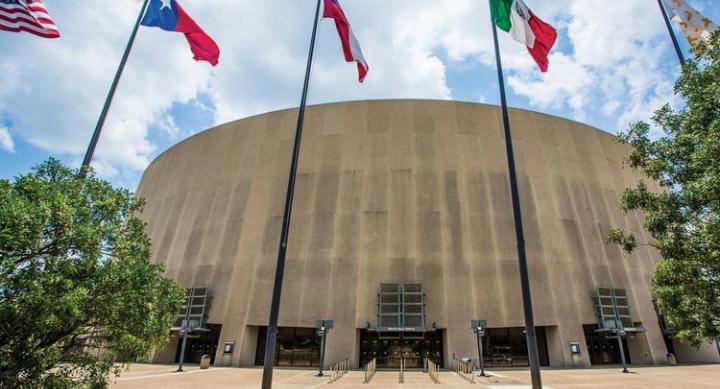
How are faculty at UT-Austin designing experiential learning with real-world characteristics for students? The following news post is an edited version of an interview conducted by the CTL with Dr. Amit Bhasin and Dr. Stephen Boyles (Cockrell School of Engineering) in which they discuss the ways they redesigned a Civil Engineering course to take advantage of these opportunities.
Civil Engineering 301 is a course that is required for every undergraduate student in the program. What we tried to do differently in this particular case was to introduce, we like to use the word, context. In the traditional version of the course, you would have an introduction to the various sub-disciplines within the discipline of civil engineering. Students would be introduced to various topics, go through some lab exercises and so forth. We tried to introduce context very early on in the development of the course and so very early on in the students’ trajectory through the courses that they are going to take over their four years in the program.
But what do we mean by context? In most civil engineering courses of this kind, when students learn about forces in a beam, they draw a line and conceive of a beam, apply a load and show pointed arrows for a load and so forth. In the real world, however, you don't have those lines and you don't have pointed arrows for loads. You have real beams that look different from what is taught in theory, so to speak. Overall, the idea for us was to introduce students to these contexts.
Look at the world around you. There are all kinds of civil engineering problems. There are building structures, water, traffic, transportation. All of these things exist. How do you take these problems and how do you define these problems into simpler problems? And what tools do you need to solve these problems? The idea of the course was not to educate students and make them civil engineers overnight but sort of to introduce them to what they would potentially encounter in the future. To set the context for what they're about to see in their second, third, or fourth years.
In order to create the context that we wished to use to introduce students to civil engineering, we adopted a large building project as a focusing device throughout the entire semester. The first time we taught the course, we asked the students to design a replacement for the Frank Erwin Center (featured image), the basketball stadium on campus. We asked them to imagine for a moment that the replacement for this structure is going to be built in downtown Austin, along the shores of Lady Bird Lake. Throughout the semester we kept returning to this example, using it as a vehicle for introducing different areas in civil engineering.
For structural engineering, we had them imagine what the frame might look like and do some very simple calculations about "How much load would this frame have to bear?" When we came to water resources and hydraulics, we asked them to answer questions, such as, "Where's the flood plain on this site? When it rains, where is the water going to go? How are you going to ensure that the water runs off of the site properly?" When it comes to transportation, which is another area of civil engineering, we asked them to think about how many people will need to be attending this center. "How would you provide parking, or a bus or a bike or other kind of infrastructure to allow people to access and exit this?" For each of these areas, we had students do small, miniature design types of project where we would give them a formula. This is partly to provide context. They would see these formulas later on in the curriculum and actually learn the theory underlying them and their broader significance.
On the last day of the course, students had to give details of their design. More importantly, they had to detail their thought process: for example, how did they rationalize their design, how did they come up with some numbers, how did they estimate certain things. They also needed to come up with a wishlist of what tools they could or should learn in order to do this project in proper engineering way, because really these are freshmen out of high school at this point and just one semester into college. In their presentations, we wanted students to pretend they're a consulting firm and then give a demonstration of all the components in this project. The structure, water, transportation and what was the thought process behind their decisions. Walking in to see the presentations, we were very apprehensive at first. We were sitting in the front row and trying to figure out how are they going to do this, but they did a very impressive job. I mean, both of us walked out of there pretty impressed. If you give students the freedom and the appropriate resources, they can be terrific at producing results.
Professor Jill Marshall of the College of Education provided significant guidance and helped us craft this course. She also helped us put together a longitudinal study to verify whether or not student learning is really enhanced by this kind of experience. One of the most important things with which Professor Marshall helped us was designing survey instruments to give to students before they took the course and then after they took the course. We wanted to see how students would feel about their own abilities and how confident they felt in their abilities to do different things related to engineering.
One of the main findings that emerged was that the students felt much more confident in their ability to design things and their ability to kind of think as engineers did. One of the challenges that we found was that some of the students felt that this course was different than a lot of the other courses they have had. It was very different from a lot of courses they have had in high school. It was different from the calculus courses they were taking. It was different from the traditional way the civil engineering systems course was taught. And some of the students have a little bit of apprehension based on the way the course would be traditionally taught. Typical questions would include, “am I missing out on something? Am I missing out on some technical skills?” When we taught the course the second time, we did work in a few more kinds of tangible exercises that would be a little more familiar to them in order to try to alleviate that anxiety. But more importantly, I think, the fact that they felt comfortable thinking as engineers and being able to design things makes me optimistic about the rest of the experience that they'll have here. Professor Marshall is helping us continue to track these students and see if this hypothesis is borne out.
Ultimately, the value of this kind of experiential learning comes from having students experience the content of the course in a way that it is likely to be used or the way that they're likely to see it outside of the classroom and in the future. For civil engineering, this approach does involve a lot of open-ended things and that's one of the main themes we wanted to bring into this kind of course model, breaking students out of a well-defined textbook problem and putting them into different contexts.
Outside of the classroom, civil engineering is a much fuzzier thing. It involves trying to identify what clients want, what their constraints are, and what's technically feasible. There's a little bit more give and take. It's not as well-defined as, "Let me just punch these numbers into a calculator and the design comes out." We wanted this experiential learning approach to introduce students to how they're ultimately going to use what they're going to learn rather than just focusing on the technical content itself. What's the environment that they will be using this in? How would this ultimately tie into their careers?
If done correctly, experiential learning can provide students a preview. It can provide them some mental hooks, if you will, upon which to hang the other concepts they're learning. They can get a sense of the curriculum, why it's structured the way it is and make connections across it.

Dr. Amit Bhasin (left)
Associate Professor, Department of Civil, Architectural and Environmental Engineering
Cockrell School of Engineering
Dr. Stephen Boyles (right)
Associate Professor, Department of Civil, Architectural and Environmental Engineering
Cockrell School of Engineering

